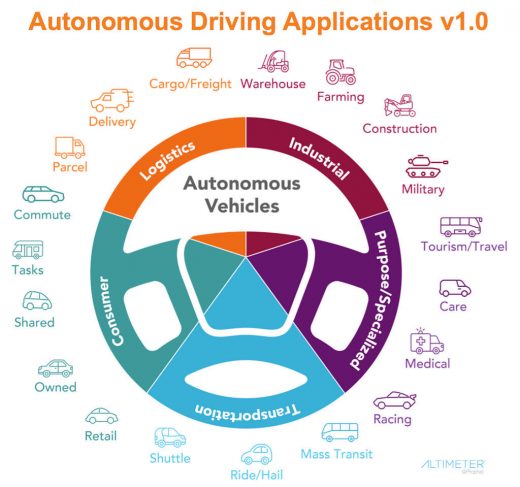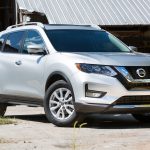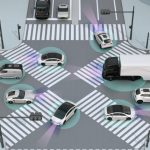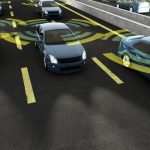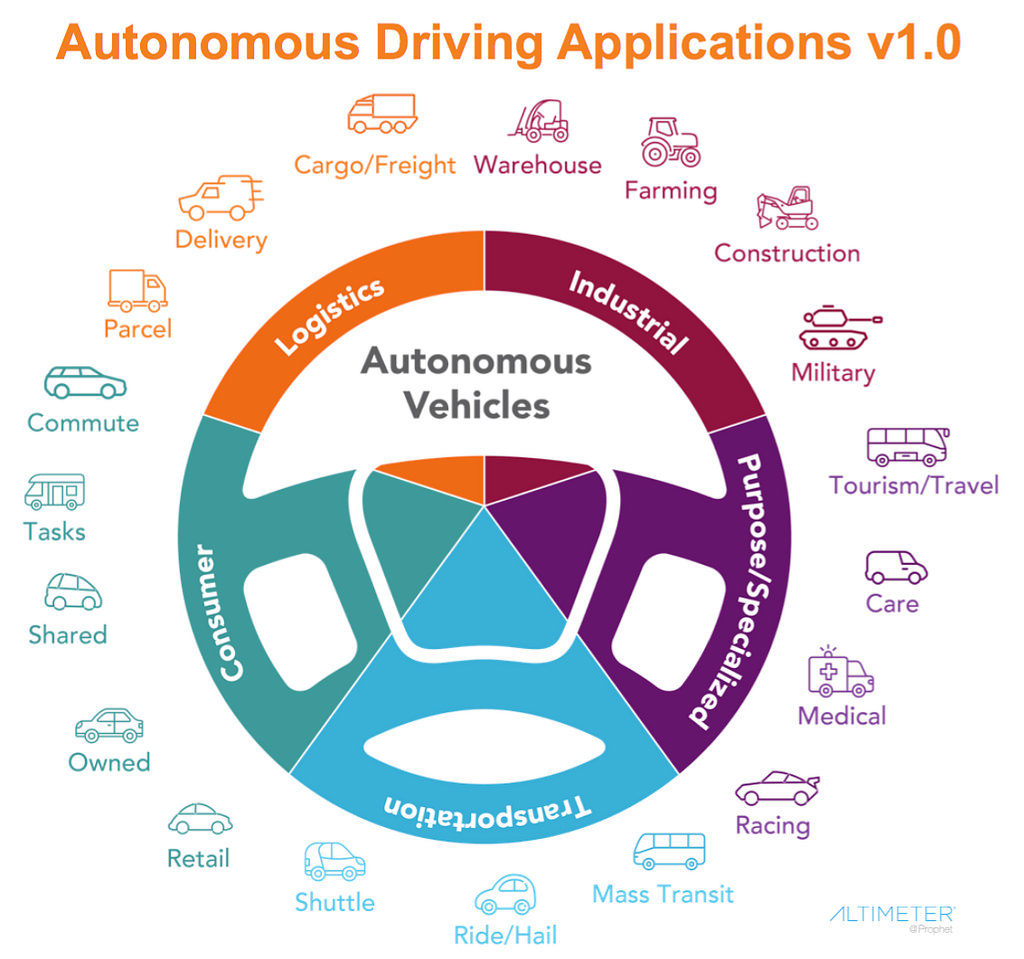Automotive 2.0: The new road ahead to autonomous vehicles
Automotive 2.0: The new road ahead to autonomous vehicles1

We are witnessing the rebirth of the automobile. It’s quite remarkable if we press pause to think about it. One could argue that much hasn’t changed since the first true gasoline-powered automobile was patented in July 1886 by Karl Benz. Now in the early 21st century, Google (now Waymo), Tesla, Mercedes-Benz, BMW, Lexus, Ford, Volvo among others, are racing to market self-driving vehicles that will redefine our relationship with automobiles and the entire transportation industry as we know it.
2021: That’s the year auto manufacturers have promised fully autonomous vehicles on the road. Unless you ask Ford, then that year is 2026. With the increasing level of activity in the autonomous space, and more companies, products, and partnerships expected to enter the fray, mapping the ecosystem proves a complex and ongoing commitment.
See also: A pre-CES look at autonomous vehicles in 2017
I spent the better part of 2016 and 2017 sifting through the entire ecosystem of self-driving manufacturers, automakers, startups, and investments to get an understanding of the companies and the trends driving the future of self-driving vehicles.
The race to 2021 (or 2026) is officially the latest tech gold rush. With the incredible flurry of activity, that date is also ambitious considering the sheer volume of technological, societal and also governmental challenges to solve between now and then. The opportunities for innovation and invention are great for anyone working on those fronts. This is one of the reasons I set out to chart the territory.
Among the mammoth challenges I faced in doing so was the process of capturing and organizing a constantly evolving industry of incumbent, new and emerging players. The resulting trend report, “The Race to 2021: The State of Autonomous Vehicles and a ‘Who’s Who’ of Industry Drivers,” tracked close to 80 companies in 11 distinct categories across 19 market applications.
2021 or 2026, access to autonomous vehicles by the masses overnight is not as close as it sounds. Initial applications for self-driving cars will be strewn across vertical applications, limited to fixed public transit courses, university and business campuses, warehouses, military applications, construction, farms and fields, and inner-city transportation services where infrastructure and pedestrian laws have been adapted for safety. Over time, self-driving applications will expand as technology advances and prices come down. Initially, we identified 19 applications, but autonomous technology creates a new platform for inventors and entrepreneurs to define new mobile services…not just cars that drive themselves.
To get from where we are today to the future, it helps to see the roads clearly. There are some givens but more so, many unknowns on this journey. It takes perspective, imagination and tremendous expertise to pave new roads. There are many challenges and opportunities ahead.
Vehicles as Platforms – Opening up new revenue opportunities
Startups and technology leaders are driving the accelerated innovation in autonomous technology, forcing incumbents to partner, acquire, or ramp up R&D to compete (e.g. BMW and Baidu; Fiat Chrysler and Waymo, an Alphabet company; and GM and Lyft). Toyota, Intel, and Mercedes-Benz have dedicated business units. Automakers are essentially getting into the software/hardware and utility business as future profits will depend less on manufacturing, selling and financing automobiles and more on monetizing driving and the free time passengers will have on their hands (instead of a steering wheel).
Progressive automakers are repositioning their future foci away from just “making cars” to becoming mobility services and sharing companies, i.e. BMW, Daimler, Fiat-Chrysler, Ford, GM, Mercedes, Nissan, Tesla, VW, et al. To this trend, ride/hail companies are also attracting investments from traditional automakers to develop next-generation autonomous services.
Cities must become smarter
While automakers are racing to 2021 for the release of autonomous vehicles, hurdles beyond technology are also tied to the lack of city infrastructure, modernization and policies.
Collaboration accelerates innovation
In what’s viewed as an atypical move, several competitive automakers are sharing mapping and environmental data to expedite the arrival of self-driving cars.
Without doing so, automakers need to invest in costly third-party or proprietary technology, which requires thorough testing and results in longer development timelines.
As Automotive 2.0 approaches, new jobs are being created along the way
Leading automakers are struggling to attract and retain expertise and are “acqui-hiring” startups through acquisition, partnership or investment to get talent and accelerate development. Companies are racing to hire those proficient in AI, machine learning, robotics, and deep learning. Since the entire idea of the car is evolving, the design of cockpits, services, and interiors overall are ripe for innovation. This will create a need for designers, UX/UI specialists, and architects to re-imagine passenger experiences.
3D mapping literally paves the way to the future of self-driving vehicles
Mapping software has emerged as its own category among technology providers in the autonomous space, as 3D terrain mapping is a critical component to the effectiveness and safety of self-driving cars as they navigate their environments. Every curb, lane marking, traffic lights and signs, buildings, intersections, services, must be rendered in 3D to create a digital network and location index. Doing so, gives cars the ability to see the road in all conditions.
Cars will become intelligent and create a virtual hive mind to improve transportation
Unlike the interoperability conundrum facing the IoT industry, autonomous cars will be able to talk to one another (Vehicle-to-Vehicle aka V2V) to share road and environmental data. For example, cars will be able to report obstacles or hazards to following vehicles to optimize routes and prevent accidents. Additionally, Vehicle-to-Everything (V2X) capabilities with allow for the exchange of information between vehicles and infrastructure and application services.
Vehicles become data centers
Every aspect of the vehicle and its environment is generating unprecedented levels of data. Its estimated that one car will use 4,000GB of data per day. Machine learning, AI, deep learning, and data science overall, is need to translate everything into value. This will lead to improved or new services, increased safety, new conveniences, better parking, greater fuel efficiency, faster delivery times, cheaper insurance, integrated payment systems, personalized experiences, and disruptive innovation.
Most consumers are not ready to give up driving
Consumers are skeptical and even wary of robot cars. Many believe that self-driving cars are inevitable but are content with driving. Concurrently, experts and consumers are concerned about the ethics of artificial intelligence in times of dire need.
To help, automakers are ramping up their respective PR machines to introduce a more approachable narrative. New vehicles are also shipping with early driver-assist semi-autonomous features such as emergency braking, lane changing, self-parking, etc., to ease consumers into the future one feature at a time.
Self-driving features is not enough to earn consumer trust
Consumers are also wary of autonomous cars because they are not human. Consumers cite trust issues, fear, and ethics as reasons they have a hard time embracing the future. Cars become machines rather than traditional representations of status, ownership and pride. Consumers are aware that in certain scenarios, cars are programmed to react in ways that may injure or terminate other human beings. Automakers will need to tame fears and humanize the technologies before fully autonomous vehicle release and adoption is feasible.
Social science can help humanize robot cars
In addition to data science, social science is also becoming prevalent in autonomous development. Automakers such as Nissan and Audi are hiring anthropologists and social scientists to help build intelligent vehicles that can think and act more human. The aim is to teach self-driving cars to act more human in their control and on-road actions (e.g. honking, signaling other people or vehicles, moving closer to lane marketing before switching lanes). The idea is for vehicles to communicate intent and personality with pedestrians, cyclists, and other drivers.
Autonomous car makers are also becoming data companies
Cars are servers on wheels. Carmakers will also become data companies, borrowing cues from Apple, Google, and Facebook to convert data into insights and customize consumer services to deliver value-added experiences. Companies such as BMW iVentures and Toyota Research Institute are already partnering with data startups such as Nauto to share driver data as a means of more rapidly improving autonomous vehicle systems.
Automotive 2.0: Redefining the Car for a New Generation of Services and Value
Self-driving vehicles are coming soon via a self-driving truck (I’m sure). It’s not just about reacting to or living with them. It’s understanding the pieces that make up a new platform for transportation and mobile services.
Even though we can neatly see the 11 categories of companies driving us toward a new future and the role they play in doing so, the incredible amount of technology, invention, design, and economies of scale happening under the hood is as or more important than the drivetrain itself. Add to that the incredible amount of innovation still coming to bring capabilities and prices to service industries, consumers, and vertical applications.
Automotive 2.0 sets the stage for vehicles to become commodities separated not by driver experience but instead by passenger accouterments. Additionally, manufacturers face the inevitable shift from brand loyalty of today into more functional and lifestyle models where consumers employ automobiles-as-a-service.
For example, to many consumers, cars represent a status symbol or emblem of self-expression. At the same time, autonomous technology creates a reality that cars are also hospitality centers. Even before self-driving cars took the spotlight, transport services such as Uber and Lyft were already shifting the idea of vehicle ownership to that of mobility services. Entertainment and experiences become critical. While there will always be a car culture driven by those who love driving and see cars as an extension of their personas, it’s important to note emerging dynamics in consumer behaviors and preferences.
Competitive value and differentiation will evolve from driver-centric features and existing cockpit designs to new and innovative spatial considerations and user experiences. Instead of forward-facing seats for passengers, we’ll see interiors that resemble lounges, offices, and living rooms. The very soul of automotive brands will now need to embrace new marque values, innovative technology, and experience design as part of its DNA.
Autonomy, Take the Wheel
With the autonomous industry racing from zero to warp speed, every aspect of the driving world is set for innovation and transformation. Whether you’re navigating the self-driving world, you’re affected by its progress or you are shaping its future, it’s essential that you rethink everything from brand to mobile services to value and every bit of infrastructure that supports getting from point B (before) to point A (autonomy).
See also: You won’t be able to buy an autonomous car until 2026, says Ford
Automotive 2.0 needs architects (brand, UX, engineering, experiential, and so on. You, they design the course toward Automotive 2.0 as it completely changes the relationship between driver and automobile and manufacturer and consumer. No incumbent should assume that the brand can simply shift gears to drive market performance. Automakers must create new value for customers. Cars and vehicles become a blank canvas for new products and services and as such, creates a new paradigm for branding, monetization, and relationships. Automotive 2.0 sets the stage for vehicles-as-a-service to become products separated not by driver experience but instead by passenger accouterments.
This exciting and comprehensive new book by my dear friend Sudha Jamthe is your guide to understanding the future of self-driving vehicles and the new world to come. More importantly, her work helps us get smarter to accelerate our capacity to help share the future of the autonomous industry. In 9 sweeping chapters, you will become not only a self-driving expert but also you will clearly see the role you will play in bringing new autonomous business models and technologies to life.
Buckle up.
Unabridged foreword to the new book by Sudha Jamthe, “2030 The Driverless World: Business Transformation from Autonomous Vehicles.”
The post Automotive 2.0: The new road ahead to autonomous vehicles appeared first on ReadWrite.
(64)

